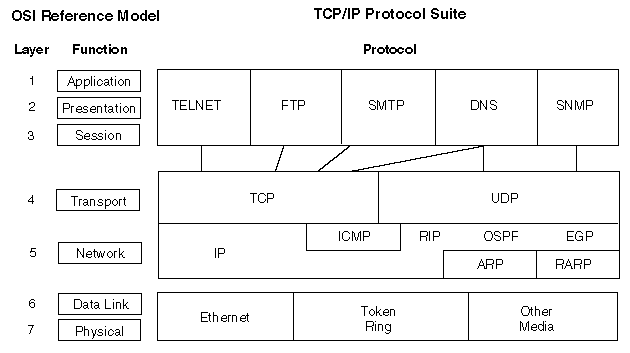1.1 The TCP/IP Suite of Protocols
The protocols in the TCP/IP suite roughly correspond to a network communications model defined by the International Organization for Standardization (ISO). This model is called the Open Systems Interconnection (OSI) reference model. The OSI model describes an ideal computer network system in which communication on the network occurs between processes at discrete and identifiable layers. Each layer on a given host provides services to the layers above it and receives services from the layers below it. Figure 1-1 illustrates the seven layers of the OSI reference model, as defined by ISO, and the roughly corresponding layers of the TCP/IP protocol suite.
Figure 1-1 OSI Reference Model


The layering system allows the developers to concentrate their efforts on the functions in a given layer. It is not necessary for designers to create all the mechanisms to send information across the network. They need to know only what services the software needs to provide to the layer above it, what services the layers below it can provide to the software, and which protocols in the suite provide those services.
The table below lists some of the more common protocols in the TCP/IP suite and the services they provide.
Table 1-1 Protocols and services in the TCP/IP Suite